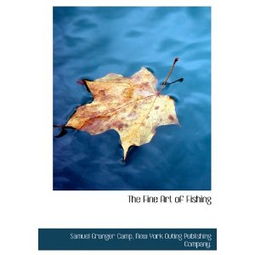Content:
Introduction: Fishing, an age-old pastime, has been captivating enthusiasts around the world for centuries. Whether you are a seasoned angler or a beginner looking to cast your line into the water, mastering the art of fishing requires a blend of knowledge, skill, and patience. In this comprehensive guide, we will delve into the essential fishing techniques and operations that will help you become a proficient angler.
Choosing the Right Equipment: Before diving into the techniques, it is crucial to have the right equipment. Here are some key items to consider:
a. Rod and Reel: Select a rod and reel that match your fishing style and the type of fish you are targeting. Lightweight rods are ideal for delicate presentations, while heavier rods are better for larger fish.
b. Line: Choose the appropriate line strength based on the fish you are targeting. Monofilament, fluorocarbon, and braided lines are popular choices, each with its unique properties.
c. Lures and Baits: Depending on your fishing location and preferences, you will need a variety of lures and baits. Soft plastics, spinners, jigs, and live bait are common options.
d. Tackle Box: Keep a well-organized tackle box with all the necessary tools, including hooks, sinkers, swivels, and split shots.

Understanding the Basics of Casting: Casting is the foundation of fishing, and mastering it is essential for success. Here are some casting techniques to consider:
a. Grip: Hold the rod with a comfortable grip, using your index and middle fingers to wrap around the handle.
b. Power: Use your wrist and arm to generate power during the casting motion. Avoid using excessive force, as it can lead to line twist and inaccurate casts.
c. Timing: The timing of your cast is crucial. Aim to release the bait at the peak of the arc to achieve maximum distance and accuracy.
d. Practice: Practice casting in different conditions to improve your technique and become more precise.
Learning to Fish Different Techniques: Fishing techniques vary depending on the species and the environment. Here are some common methods:
a. Still Fishing: This technique involves casting your line and allowing it to drift or sit still in the water. It is effective for fish that feed near the surface or bottom.
b. Trolling: Trolling involves slowly dragging a lure or bait behind a moving boat. This technique is great for targeting fish that follow schools or are suspended in the water column.
c. Fly Fishing: Fly fishing requires specialized equipment and techniques. It involves casting a weighted fly line and a fly, which mimics natural prey for the fish.
d. Ice Fishing: Ice fishing is a popular winter activity. It involves drilling holes in the ice and using rods and jigs to catch fish that remain active beneath the ice.
Mastering Bait Presentation: The way you present your bait or lure can significantly impact your success. Here are some tips:
a. Match the hatch: Use bait or lures that closely resemble the natural prey of the fish you are targeting.
b. Motion: Add a subtle motion to your bait or lure to mimic the movement of real prey. This can trigger a fish's feeding instincts.
c. Patience: Be patient and allow your bait or lure to settle for a few moments before reeling it in. This gives the fish time to detect and strike.
Reading the Water: Understanding the water you are fishing in is crucial for success. Here are some key factors to consider:
a. Currents: Fish often gather in areas with currents, as they provide food and protection. Identify these areas and adjust your approach accordingly.
b. Structure: Obstacles like rocks, logs, and vegetation can hold fish. Target these areas with your baits or lures.
c. Depth: Fish often prefer certain depths, so use your rod's depth indicator or sonar to determine the optimal depth for your presentation.
Safety and Etiquette: Fishing can be a relaxing and enjoyable activity, but it is important to prioritize safety and adhere to fishing etiquette:
a. Wear appropriate clothing and footwear for the weather and terrain.
b. Always keep your eyes on the water to avoid accidents and protect wildlife.
c. Respect private property and fishing regulations, including size and catch limits.
Conclusion: Mastering the art of fishing involves a combination of knowledge, skill, and practice. By following the techniques and operations outlined in this guide, you will be well on your way to becoming a proficient angler. Remember to enjoy the experience, respect the environment, and always prioritize safety. Happy fishing!












